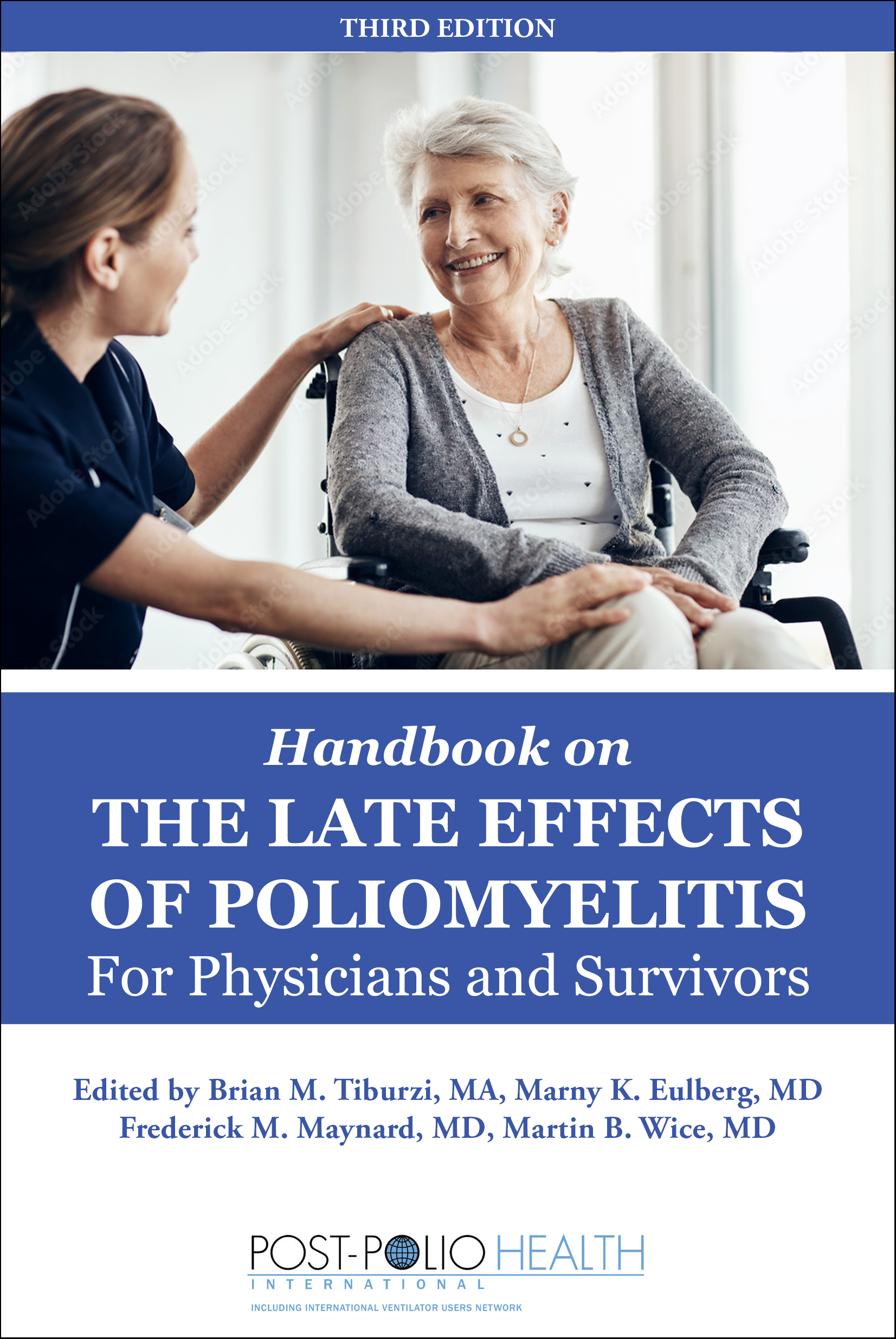Handbook on the Late Effects of Poliomyelitis for Physicians and Survivors

PHI’s Handbook on the Late Effects of Poliomyelitis for Physicians and Survivors, containing 91 entries in dictionary format, is a compilation of the research and experience of more than 40 experts and is intended to serve as a valuable resource for polio survivors and their health professionals.
FOREWORD
The acute attack of poliomyelitis began with flu-like symptoms. The vast majority of individuals recovered. However, between 1-2% developed weakness in their limbs, trunk, and/or muscles of swallowing, speech, and respiration. Many individuals required hospitalization. Some were put to bed. Many received hot pack treatments, range-of-motion exercises, and numerous therapies. Many required special aids such as braces, crutches, or wheelchairs, while others required multiple surgical procedures. Some required assistance with breathing. With great physical and emotional effort, these paralytic polio survivors' strength and function improved. They returned to their families, completed school, held jobs, and raised families.
Decades later, many reported new weakness, inordinate fatigue, new aches and pains, new difficulties with breathing or swallowing, and a decrease in the ability to continue the usual life activities. Unexplained by non-polio related medical problems, these new symptoms caused many polio survivors to be perplexed and frightened. Many feared the reliving of their original trauma. Many feared loss of independence. Not only were survivors unclear about what was happening, in addition, their families, fellow workers, and the medical profession did not initially recognize the significance of these changes either. Many felt alone.
In a 1979 letter to the Rehabilitation Gazette, Larry Schneider articulated these concerns. The reactions to his letter led to the realization that many people with prior paralytic polio were having similar difficulties which ultimately led to the recognition of the late effects of poliomyelitis, and in particular, the post-polio syndrome. The exact cause(s) of post-polio syndrome is(are) still under investigation. While it is estimated that 25-40% of survivors will develop post-polio syndrome, on an individual basis, it is difficult to predict who they will be.
Fortunately, the late effects of poliomyelitis are manageable. This new edition of the Handbook describes the late effects of poliomyelitis, its evaluation, and its appropriate management. Written by experts in the field, the Handbook is designed to be useful both for the survivors of polio and their families, as well as health care professionals.
Martin B. Wice, MD
Saint Louis, Missouri
